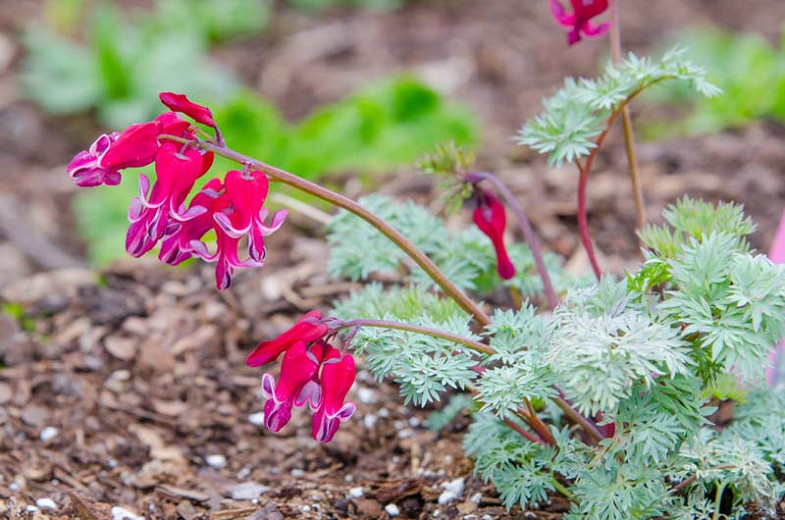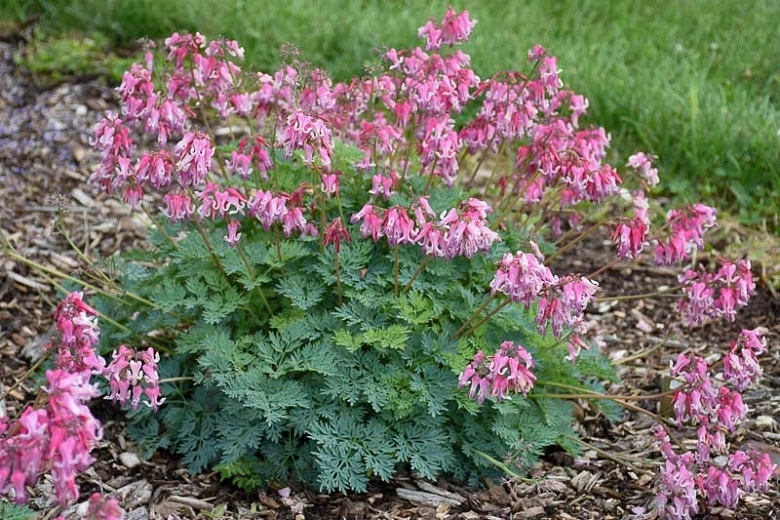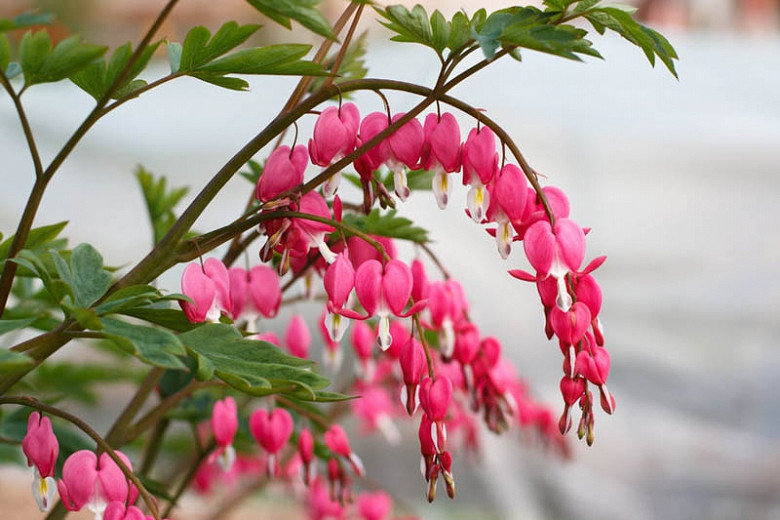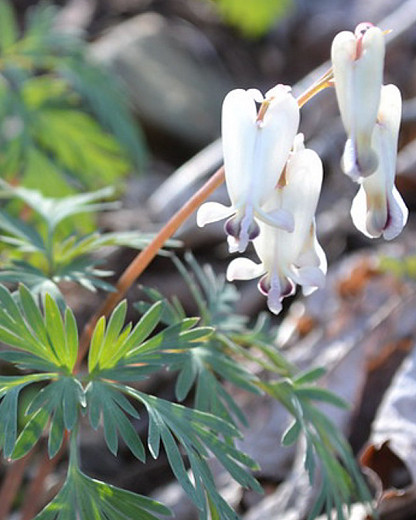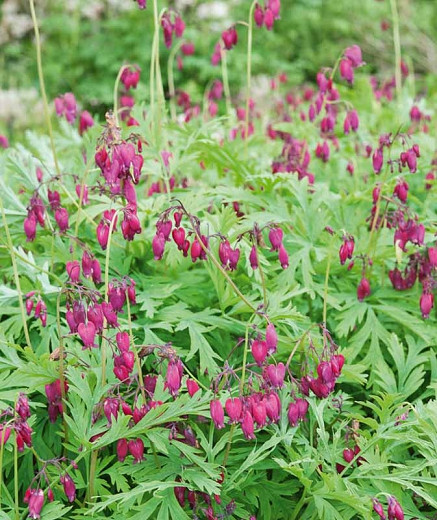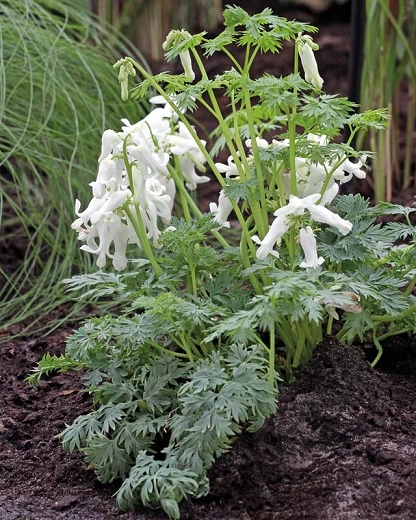Dicentra Burning Hearts (Fern-Leaf Bleeding Heart)
Incredibly pretty, Dicentra ‘Burning Hearts’ (Fern-Leaf Bleeding Heart) is a compact, bushy perennial noted for its arching sprays of large, deep cerise-rose, heart-shaped flowers edged in white. Blooming over a very long season extending from late spring to late summer in cool summer climates, the flowers dangle gracefully above a striking foliage mound of feathery, finely-divided, blue-gray leaves. In warmer areas, flowering will stop in the heat of the summer and may start again in late summer to early fall.
Incredibly pretty, Dicentra 'Burning Hearts' (Fern-Leaf Bleeding Heart) is a compact, bushy perennial noted for its arching sprays of large, deep cerise-rose, heart-shaped flowers edged in white. Blooming over a very long season extending from late spring to late summer in cool summer climates, the flowers dangle gracefully above a striking foliage mound of feathery, finely-divided, blue-gray leaves. In warmer areas, flowering will stop in the heat of the summer and may start again in late summer to early fall. Perfect to brighten a shady border or to enchant passersby all season long.
- Grows in a compact clump, up to 6-12 in. tall (15-30 cm) and 12-18 in. wide (30-45 cm). Unlike Common Bleeding Hearts (Dicentra spectabilis), it will not go dormant in midsummer as long as the soil is kept moist.
- Thrives in part shade and is easily grown in fertile, humus-rich, neutral or slightly alkaline, moist, well-drained soils. It can be grown in full sun in the coolest part of its range provided the soil is kept consistently moist.
- Great for beds and borders, cottage gardens, underplanting shrubs.
- No serious pest or disease issues. Keep an eye out for slugs. Deer and rabbit resistant.
- Propagate by division or root cuttings.
- If ingested, all parts may cause stomach upset, the foliage may aggravate skin allergies. Wear gloves and other protective equipment when handling. Bleeding Heart plants are not only toxic to humans but animals as well. Although aesthetically pleasing, this plant contains soquinoline alkaloids. Alkaloids negatively affect animals, most commonly cattle, sheep, and dogs.
Requirements
| Hardiness | 5 – 9 |
|---|---|
| Heat Zones | 1 – 8 |
| Climate Zones | 1, 1A, 1B, 2, 2A, 2B, 3, 3A, 3B, 4, 5, 6, 7, 8, 9, 14, 15, 16, 17, 18, 19, 20, 21, 22, 23, 24, A1, A2, A3 |
| Plant Type | Perennials |
| Plant Family | Dicentra – Bleeding Hearts |
| Exposure | Partial Sun |
| Season of Interest | Spring (Late)Summer (Early,Mid,Late)Fall |
| Height | 6" – 1' (15cm – 30cm) |
| Spread | 1' – 2' (30cm – 60cm) |
| Spacing | 18″ (45cm) |
| Water Needs | Average |
| Maintenance | Low |
| Soil Type | Chalk, Clay, Loam |
| Soil pH | Alkaline, Neutral |
| Soil Drainage | Moist but Well-Drained, Poorly Drained |
| Characteristics | Showy |
| Tolerance | Deer, Rabbit |
| Attracts | Butterflies, Hummingbirds |
| Garden Uses | Beds and Borders, Underplanting Roses and Shrubs |
| Garden Styles | Informal and Cottage |
